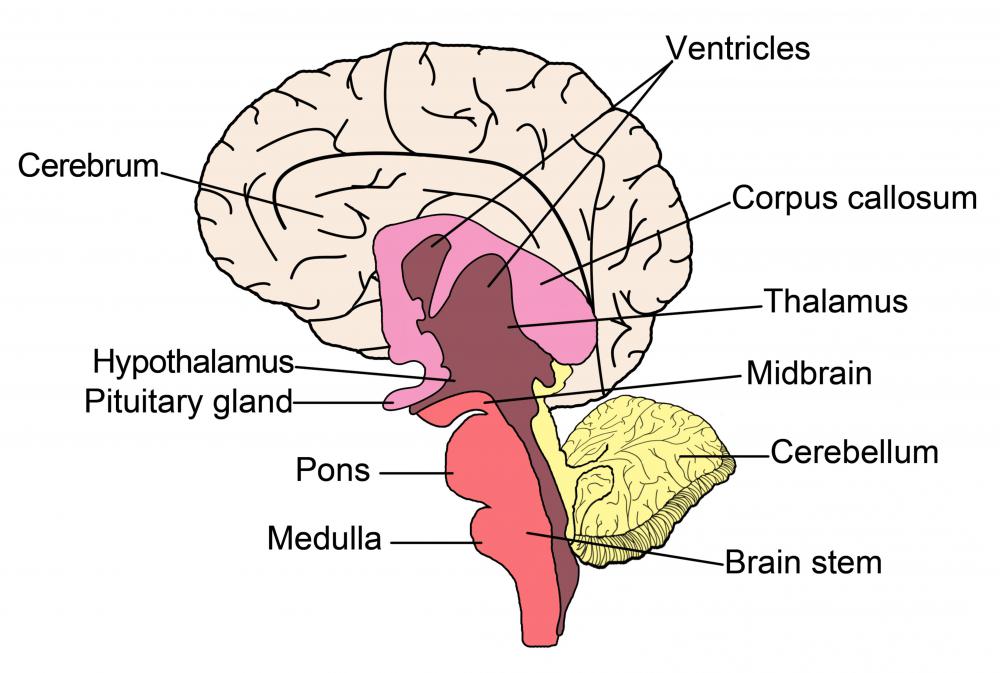At WiseGEEK, we're committed to delivering accurate, trustworthy information. Our expert-authored content is rigorously fact-checked and sourced from credible authorities. Discover how we uphold the highest standards in providing you with reliable knowledge.
What Is the Extreme Capsule?
The extreme capsule, also known as the capsula extrema, is a tract of long association fiber, which is a type of nerve fiber that provides a bidirectional connection between distant points of the same hemisphere within the cerebrum — the largest part of the brain. It's thought that the extreme capsule plays a role in language because if its two-way connection between the inferior frontal gyrus, also called Broca's area, which is involved in speech production, and the middle-rear portion of the superior temporal gyrus, also is called Wernicke's area, which is integral to understanding written and spoken language. A gyrus is a ridge on the cerebral cortex, which is the outermost layer of neural tissue on the brain.
What most people think of as the brain is actually called the cerebrum, or telencephalon, which is made up of five sections: the cerebral cortex, basal ganglia, corpus striatum, and the olfactory bulb. The outermost layer of the cerebrum is the cerebral cortex. The outer layer of the cerebral cortex is called gray matter because it is the color the tissue turns when the brain is extracted from the body and preserved.

In humans and large mammals, the gray matter is folded creating ridges, or gyri, and depressions called sulci. Two-thirds of the human brain is buried in sulci. The tissue underneath the gray matter is called white matter due to its coloration after preservation. White matter is pink prior to preservation.
A thin and slightly curled strip of gray matter, called the claustrum, sits between two strips of white matter. One strip is the external capsule, which separates the claustrum from the putamen, and the other is the extreme capsule, which separates the claustrum from the insular cortex. The extreme capsule allows two-way communication between the claustrum and the insular cortex, or insula, which is a deeply buried fold of gray matter that sits within the lateral sulcus between the brain's temporal and frontal lobes.

There are a number of fiber bundles adjacent to the extreme capsule such as the medial, inferior, and superior longitudinal fascicles. The medial longitudinal fascicle carries information about where the eyes should move. The inferior longitudinal fascicles permits communication between the temporal and occipital lobes. The superior longitudinal fascicle connects the front and back of the cerebrum. The extreme capsule is easily distinguished from these nearby fiber bundles through the use of magnetic resonance imagery (MRI) tractography and computer imaging.
AS FEATURED ON:
AS FEATURED ON:












Discuss this Article
Post your comments